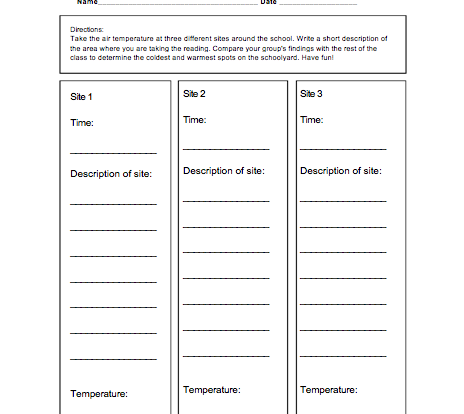-
Students complete this sun scavenger hunt to learn about sunlight, shadows, temperature and its relationship to plant and animal life in the schoolyard. Wrap up: Discuss sunlight (daylight/ seasonal), how the sun affects the appearance of shadows, temperature variations, animal/plant life and their relationships to sunlight (ie: amphibians), the visible change of seasons.
-
Discuss sun movement (daily, seasonal), day length, temperature, sun placement/tilt, and shadow length. Predict warmest spot in the natural area and discuss importance for animals. In pairs, students place a thermometer in hypothesized warm spot, and have 2 chances to find the “hot spot”. Wrap-up: share warmest area and importance, discuss changes in body shadow and reveal eraser shadow technique: need to have body in line with the sun and the eraser. Sun needs to be at their back.
-
Learn about temperature and variability. Have students take the air temperature at three different sites around the school and write a short description of the areas they chose. Compare finding between groups to determine the coldest and warmest spots on the schoolyard.
-
Learn about air temperature and variability. Take the air temperature at different sites around the school and compare findings to determine the coldest and warmest spots on the schoolyard.
-
The Fertilizer Institute represents the fertilizer industry in the United States. The Institute represents the industry with legislative, economic, scientific and public relations programs.
To learn more visit: www.tfi.org










